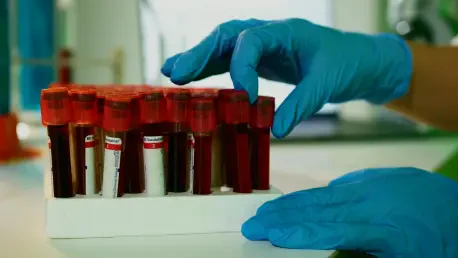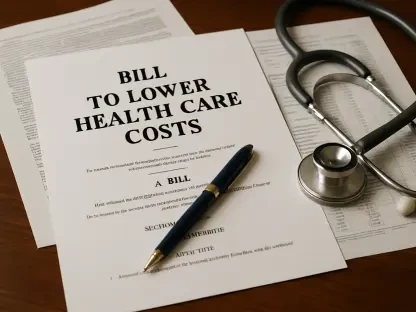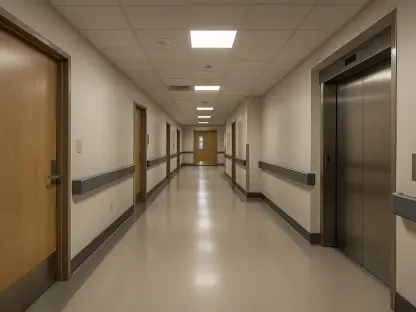In clinics where every minute and dollar count, a screening tool built on routine blood work and machine learning promises to move patients faster toward answers and treatment by turning familiar lab values into early signals of tuberculosis risk that are cheap to collect, easy to interpret, and ready for scale. Emerging from Nantong University, the approach marries complete blood count parameters with a gradient boosting model accessible through a web app, a pairing designed to triage patients long before sputum culture or molecular assays return results. Drawing on records from Jiangsu Province between January 2022 and September 2024, the study showed that carefully chosen hematologic markers can separate likely TB from unlikely TB, especially in settings where specialized diagnostics are scarce and backlogs are common.
Why It Matters
Tuberculosis still kills more people than any other single infectious disease, and the World Health Organization estimated 1.23 million deaths in 2024, with 150,000 among people living with HIV, a sobering reminder that small gains in access or speed can translate into lives saved. Conventional methods—smear microscopy, culture, and imaging—remain indispensable but often deliver answers slowly, require skilled operators, and struggle in early or paucibacillary disease. Molecular tests such as NAATs raise accuracy but impose higher costs and infrastructure needs that exclude many clinics. This tension creates a practical gap: a rapid, low-cost triage step that can flag probable cases for confirmation while sparing limited resources when risk is low.
The Jiangsu work targets that gap by turning ubiquitous CBC data into a risk score that aligns with real-world constraints. Because red and white cell counts, hemoglobin, platelets, and derived ratios reflect the host response to infection, they provide biologically grounded clues that are already recorded in most encounters. Plugging those values into a transparent model could shorten the window between first visit and confirmatory testing, lowering transmission risk and improving outcomes. For health systems in high-burden regions—including parts of China—this kind of pre-screening can also rebalance budgets by funneling expensive tests toward those most likely to benefit, without asking overworked staff to change workflows dramatically.
How The Study Worked
Researchers assembled a cohort of over 3,400 participants from two hospitals in Jiangsu Province, sorting them into TB-infected, TB-uninfected, and carefully screened healthy controls after reviewing symptoms, imaging, and laboratory evidence. Variables riddled with missingness were removed, extreme outliers were filtered, and the cleaned dataset was split into training, validation, and testing subsets to guard against overfitting. The feature set was deliberately lean: CBC elements and inflammation-linked ratios such as the neutrophil-to-lymphocyte ratio (NLR) and platelet-to-lymphocyte ratio (PLR), chosen for their cost, availability, and relevance to systemic immune activation that often accompanies active TB.
On this foundation, multiple algorithms were trained and compared—logistic regression for baseline performance, random forest for nonlinear patterns, and gradient boosting machines (GBMs) for fine-grained discrimination. LASSO sharpened the focus on informative markers, while SHAP (SHapley Additive exPlanations) unpacked the model’s reasoning in clinician-friendly terms. The GBM rose to the top on the held-out test set, showing strong discrimination with particular strength in ruling out TB, a desirable property for triage. Calibration curves suggested agreement between predicted and observed risk, and decision curve analysis indicated net benefit across plausible thresholds, supporting use as a front-line screen that directs confirmatory NAATs to those at highest risk.
From Model To Web App And Practical Fit
The team translated the best-performing GBM into a lightweight web app that accepts routine blood values and returns a TB risk estimate in seconds, intentionally avoiding reliance on specialized equipment or complex inputs. In practice, the app functions as an initial gate: patients flagged low risk can be reassured or monitored, while those flagged higher risk move promptly to NAATs or other definitive diagnostics. SHAP explanations highlight which markers—often PLR and other immune-inflammatory features—drive each prediction, giving clinicians a clear rationale and building trust. Because the inputs are universal, deployment can extend from hospitals to community screening sites where phlebotomy is feasible but sputum collection or advanced platforms are not.
Operationally, this fit matters. Early results showed distinct hematologic patterns in TB: lower red blood cell counts and hemoglobin, higher platelets, lower lymphocytes, and elevated ratios like NLR and PLR. In low-prevalence clinics, the model’s ruling-out capability could reduce unnecessary follow-up; in higher-prevalence areas, it could help rank patients for scarce confirmatory slots. The approach sat comfortably alongside existing pathways rather than displacing them, letting programs reallocate time and funds toward those most likely to need rapid intervention. If adopted with clear guardrails, it offered a way to make incremental yet tangible gains in speed, access, and cost-effectiveness.
Caveats And Next Steps
Scope and representativeness remained limits. The dataset came from two hospitals in one province and drew on retrospective records, leaving questions about performance in other regions, age bands, and comorbidity profiles. Patients with other lung diseases were largely excluded, raising the possibility of spectrum bias; distinguishing TB from bacterial pneumonia, COPD, or malignancy will be essential before wide rollout. The model’s role was also circumscribed: a screening adjunct rather than a substitute for microbiological or molecular confirmation, with misclassification risks that demand downstream testing and vigilant clinical judgment. Data handling decisions—feature removal for missingness and outlier filtering—also warrant prospective scrutiny.
Actionable steps followed naturally. External, multi-site validation across urban, rural, and high-altitude settings could confirm generalizability where hematologic baselines differ. Prospective studies should test workflow integration, patient outcomes, and cost-effectiveness when the app sits in triage lines or community campaigns. Including comparison cohorts with common respiratory conditions would probe specificity, while hybrid models that blend blood features with symptom checklists, imaging summaries, or portable point-of-care metrics could raise accuracy without heavy infrastructure. Framed this way, the tool complemented standard diagnostics, guided smarter use of NAATs, and pointed health systems toward faster, fairer TB detection.









